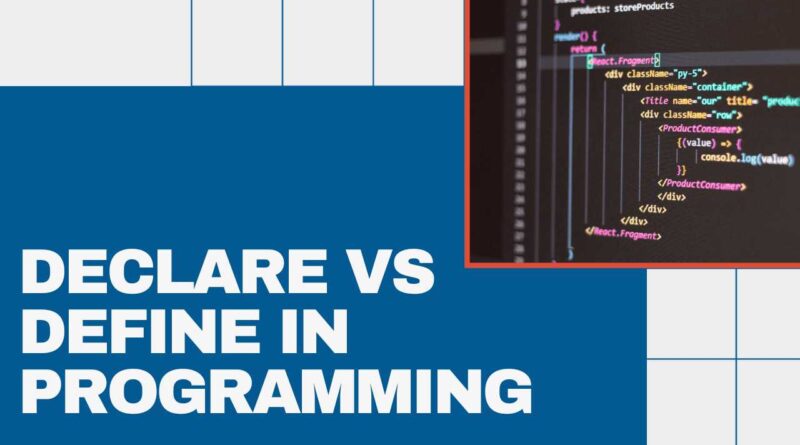In programming, the terms “declare” and “define” are often used in the context of variables, functions, or other entities. While the exact usage can vary slightly depending on the programming language, here are some general distinctions:
Declare:
- Declaring a variable means announcing its existence to the compiler or interpreter.
- It involves specifying the variable’s name and type, but it doesn’t allocate memory or assign a specific value.
- The declaration provides information to the compiler about the variable’s type, and it lets the compiler know that the variable will be used in the program.
Example in C++:
C++
int x; // Variable declarationIn this example, x is declared as an integer variable.
Define:
- Defining a variable includes both declaration and allocation of memory for the variable.
- It may also involve providing an initial value to the variable.
- The definition reserves storage space for the variable in memory.
Example in C++:
C++
int x = 10; // Variable definitionIn this example, x is both declared and defined as an integer variable with an initial value of 10.
In some programming languages, especially those with dynamic typing, declaring and defining a variable can happen simultaneously. For example, in Python:
Python
x = 10 # Variable declaration and definitionIn this Python example, x is both declared and defined as a variable with the initial value of 10 in a single step.
| Aspect | Variable Declaration | Variable Definition |
|---|---|---|
| Purpose | Announcing a variable’s existence. | Allocating memory and potentially providing an initial value. |
| Syntax Example (C++) | int x; | int x = 10; |
| Memory Allocation | Does not allocate memory. | Allocates memory for the variable. |
| Value Assignment | No specific value is assigned. | May include assigning an initial value to the variable. |
| Information to Compiler | Informs the compiler about the variable’s type and existence. | Provides complete information to the compiler, including type and initial value. |
| Usage in Dynamic Typing | In dynamically-typed languages, may be less explicit or implicit. | In dynamically-typed languages, may happen simultaneously with declaration. |
See more:

